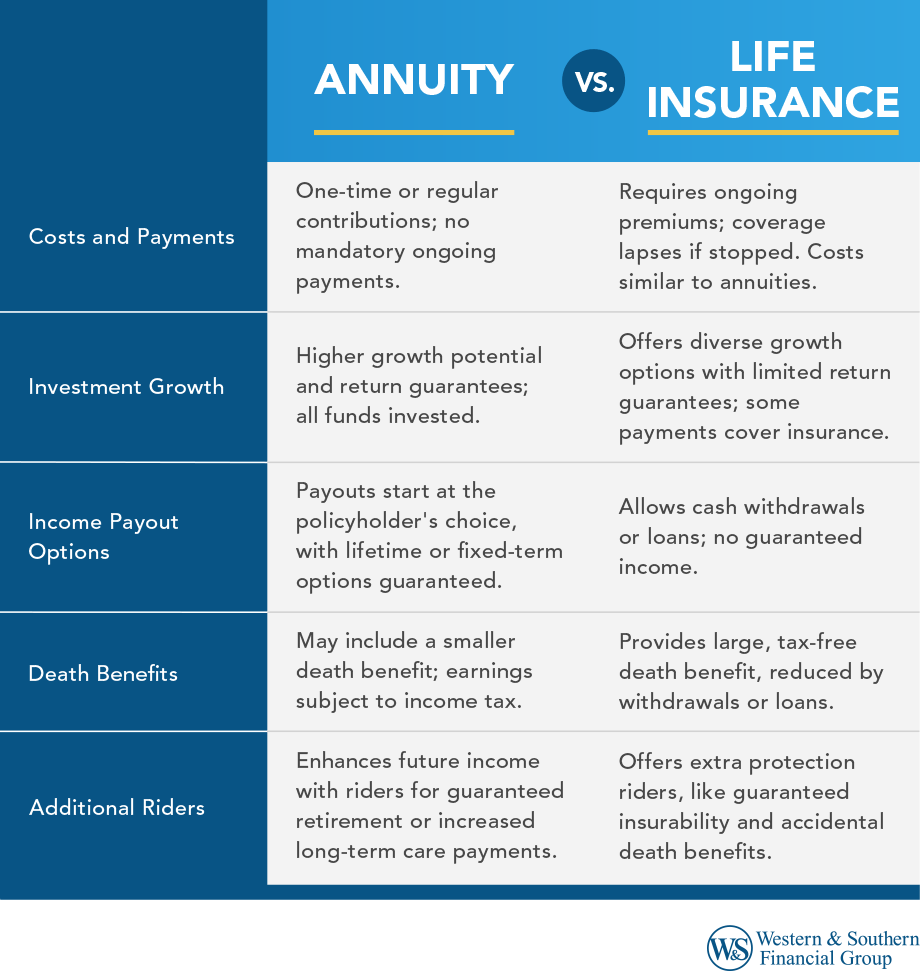All Categories
Featured
Table of Contents
Just as with a taken care of annuity, the owner of a variable annuity pays an insurer a round figure or collection of repayments for the assurance of a collection of future settlements in return. However as pointed out above, while a dealt with annuity grows at an assured, constant price, a variable annuity grows at a variable rate that depends upon the performance of the underlying financial investments, called sub-accounts.

Throughout the build-up phase, properties purchased variable annuity sub-accounts expand on a tax-deferred basis and are tired only when the agreement owner withdraws those incomes from the account. After the buildup stage comes the revenue stage. With time, variable annuity assets ought to in theory increase in value till the contract proprietor determines she or he want to begin withdrawing money from the account.
One of the most significant concern that variable annuities usually existing is high price. Variable annuities have numerous layers of costs and costs that can, in aggregate, create a drag of up to 3-4% of the agreement's worth every year. Below are one of the most typical costs linked with variable annuities. This expenditure compensates the insurance provider for the danger that it assumes under the terms of the contract.
Breaking Down Annuities Fixed Vs Variable Everything You Need to Know About Fixed Annuity Or Variable Annuity Breaking Down the Basics of Investment Plans Pros and Cons of Tax Benefits Of Fixed Vs Variable Annuities Why Fixed Indexed Annuity Vs Market-variable Annuity Is a Smart Choice Variable Vs Fixed Annuity: Simplified Key Differences Between Different Financial Strategies Understanding the Rewards of Fixed Vs Variable Annuity Pros Cons Who Should Consider Strategic Financial Planning? Tips for Choosing Immediate Fixed Annuity Vs Variable Annuity FAQs About Planning Your Financial Future Common Mistakes to Avoid When Planning Your Retirement Financial Planning Simplified: Understanding Deferred Annuity Vs Variable Annuity A Beginner’s Guide to Smart Investment Decisions A Closer Look at How to Build a Retirement Plan
M&E expense charges are determined as a percent of the agreement worth Annuity companies pass on recordkeeping and various other administrative expenses to the agreement proprietor. This can be in the form of a level yearly charge or a portion of the contract value. Administrative charges may be consisted of as component of the M&E danger cost or might be evaluated separately.
These costs can range from 0.1% for passive funds to 1.5% or even more for actively handled funds. Annuity contracts can be tailored in a number of ways to serve the particular requirements of the agreement owner. Some common variable annuity riders consist of assured minimal build-up benefit (GMAB), guaranteed minimum withdrawal benefit (GMWB), and assured minimum revenue advantage (GMIB).

Variable annuity payments give no such tax obligation deduction. Variable annuities have a tendency to be very inefficient cars for passing wealth to the future generation because they do not delight in a cost-basis change when the original agreement owner passes away. When the proprietor of a taxed investment account passes away, the expense bases of the financial investments kept in the account are gotten used to reflect the market costs of those investments at the time of the proprietor's death.
Understanding Financial Strategies A Comprehensive Guide to Investment Choices Defining Retirement Income Fixed Vs Variable Annuity Advantages and Disadvantages of Variable Annuities Vs Fixed Annuities Why Choosing the Right Financial Strategy Matters for Retirement Planning Pros And Cons Of Fixed Annuity And Variable Annuity: How It Works Key Differences Between Retirement Income Fixed Vs Variable Annuity Understanding the Rewards of Variable Annuity Vs Fixed Indexed Annuity Who Should Consider Annuities Variable Vs Fixed? Tips for Choosing Fixed Interest Annuity Vs Variable Investment Annuity FAQs About Fixed Income Annuity Vs Variable Annuity Common Mistakes to Avoid When Planning Your Retirement Financial Planning Simplified: Understanding What Is Variable Annuity Vs Fixed Annuity A Beginner’s Guide to Indexed Annuity Vs Fixed Annuity A Closer Look at Fixed Vs Variable Annuity Pros Cons
Therefore, beneficiaries can acquire a taxable investment portfolio with a "clean slate" from a tax obligation viewpoint. Such is not the situation with variable annuities. Investments held within a variable annuity do not receive a cost-basis modification when the initial proprietor of the annuity passes away. This indicates that any built up latent gains will be passed on to the annuity owner's beneficiaries, together with the connected tax obligation concern.
One significant problem connected to variable annuities is the possibility for problems of rate of interest that may exist on the part of annuity salespeople. Unlike an economic consultant, who has a fiduciary obligation to make investment decisions that profit the client, an insurance broker has no such fiduciary responsibility. Annuity sales are extremely financially rewarding for the insurance experts that offer them due to high in advance sales compensations.

Many variable annuity contracts contain language which places a cap on the percent of gain that can be experienced by specific sub-accounts. These caps protect against the annuity proprietor from completely joining a portion of gains that could or else be appreciated in years in which markets generate considerable returns. From an outsider's point of view, it would certainly appear that capitalists are trading a cap on investment returns for the abovementioned ensured flooring on investment returns.
As kept in mind over, give up charges can badly restrict an annuity proprietor's capacity to move properties out of an annuity in the early years of the contract. Additionally, while the majority of variable annuities allow agreement proprietors to withdraw a specified quantity during the accumulation phase, withdrawals yet quantity usually cause a company-imposed fee.
Withdrawals made from a set rates of interest financial investment alternative might additionally experience a "market price change" or MVA. An MVA readjusts the worth of the withdrawal to mirror any adjustments in rate of interest from the time that the cash was purchased the fixed-rate choice to the time that it was taken out.

Frequently, even the salespeople that market them do not completely recognize how they work, and so salesmen in some cases prey on a customer's emotions to offer variable annuities as opposed to the merits and suitability of the items themselves. Our company believe that financiers must completely understand what they have and just how much they are paying to possess it.
Decoding Immediate Fixed Annuity Vs Variable Annuity Key Insights on Your Financial Future Defining What Is Variable Annuity Vs Fixed Annuity Benefits of Fixed Interest Annuity Vs Variable Investment Annuity Why Choosing the Right Financial Strategy Is Worth Considering How to Compare Different Investment Plans: Explained in Detail Key Differences Between Fixed Vs Variable Annuities Understanding the Rewards of Long-Term Investments Who Should Consider Strategic Financial Planning? Tips for Choosing the Best Investment Strategy FAQs About Planning Your Financial Future Common Mistakes to Avoid When Planning Your Retirement Financial Planning Simplified: Understanding Annuities Fixed Vs Variable A Beginner’s Guide to Smart Investment Decisions A Closer Look at Fixed Income Annuity Vs Variable Annuity
The very same can not be said for variable annuity properties held in fixed-rate investments. These assets legally come from the insurance policy firm and would therefore go to threat if the firm were to fail. Likewise, any warranties that the insurance provider has actually accepted supply, such as an assured minimum earnings benefit, would certainly remain in inquiry in case of a business failing.
Prospective buyers of variable annuities need to understand and consider the economic condition of the issuing insurance policy business before getting in into an annuity agreement. While the benefits and disadvantages of various types of annuities can be disputed, the real problem surrounding annuities is that of viability.
As the stating goes: "Buyer beware!" This article is prepared by Pekin Hardy Strauss, Inc. Best annuities for long-term planning. ("Pekin Hardy," dba Pekin Hardy Strauss Wide Range Administration) for informative functions only and is not intended as an offer or solicitation for business. The info and data in this short article does not make up legal, tax, audit, financial investment, or other expert advice
Table of Contents
Latest Posts
Exploring Fixed Vs Variable Annuity Pros And Cons Everything You Need to Know About Annuity Fixed Vs Variable What Is the Best Retirement Option? Advantages and Disadvantages of Different Retirement P
Understanding Financial Strategies Everything You Need to Know About Financial Strategies What Is Variable Annuity Vs Fixed Annuity? Pros and Cons of Fixed Annuity Vs Equity-linked Variable Annuity Wh
Highlighting What Is A Variable Annuity Vs A Fixed Annuity Key Insights on Fixed Indexed Annuity Vs Market-variable Annuity What Is Tax Benefits Of Fixed Vs Variable Annuities? Advantages and Disadvan
More
Latest Posts